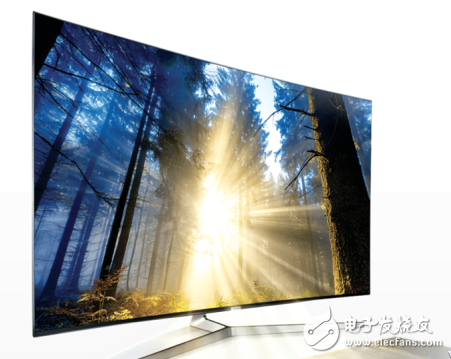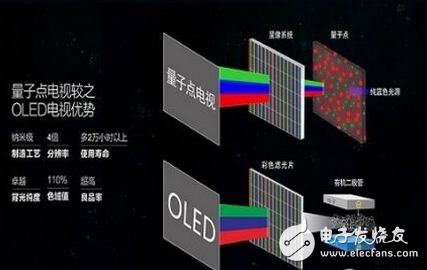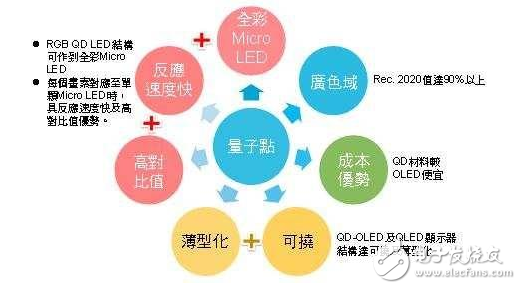How about Samsung Quantum Dot TV, Quantum Dot Technology Analysis
Quantum dot TV seems to be one of the most mentioned new TV products this year. Just like last year's curved TV, quantum dot TV has quickly become the standard for high-end products of various brands.
I have to mention "hdr technology", which focuses on improving the brightness and detail of the picture, and optimizing the color of the quantum dots, which can be synchronized in the color and brightness of the picture to achieve a better picture. Some people may say that hdr is to increase the brightness of the screen, what is difficult?
In fact, hdr technology is not simply to improve the overall brightness of the picture. Friends who will use PS or camera should understand that if the overall brightness of the picture is greatly improved, the whole picture will become "white", and the part that is already bright will be Excessive exposure. The hdr technology can effectively improve the brightness of the dark part of the picture, while not letting the details of the picture appear distorted or overexposed.
Samsung Quantum Dot TV continues its unique "dark black inversion" technology while using hdr technology. Perhaps you can't quite understand what this “dark black reversal†means. In fact, it is very simple to explain that Samsung TV can greatly reduce the reflection of the screen on ambient light by optimizing the liquid crystal structure of the TV panel. Black is more purely purpose.

First of all, to have the color performance of quantum dot technology;
Second, we must have the picture level performance of hdr technology. In terms of these two standards, the new generation of Samsung quantum dot TV cadmium-free technology and 1000 nit hdr technology seems to have exceeded our standard requirements;
The third point is the anti-interference ability to the external environment. No one likes to turn off the TV for each time you want to turn off the curtain. In this regard, the "dark black inversion" technology of Samsung Quantum Dot TV is particularly important.
How about Samsung Quantum Dot TV - Comparative Analysis of Samsung Quantum Dots TechnologySamsung's current quantum dot SUHD TV requires a separate backlight module to illuminate the pixels, but QLED technology combines OLED and quantum dots (2-10nm), eliminating the need for backlights, which can greatly reduce thickness, reduce power consumption, and improve display. The effect, especially the single pixel color performance is better, hdr has more advantages.
However, it is reported that Samsung Display Panel's display panel research and development company Samsung Display has completely stopped the development of LCD display technology, and will not launch OLED technology, will never release OLED TV, will directly cross the QLED stage. Compared to OLEDs, QLED panels with inorganic materials have a longer life and lower cost.

Quantum Dot (QD) TV is Samsung's main development technology in high-end models, mainly competing with OLED TVs; quantum dot materials have obvious advantages in display is high color saturation, and QLED displays produced by Samsung in the future are The light-emitting type is simpler in structure, and compared with OLED, it has the advantages of low cost and long life. As for the Micro LED, which is highly concerned by the industry, DIGITIMES Research believes that if it is matched with quantum dot materials, it has the opportunity to achieve full coloring compared with other structures and processes, but the production schedule has not yet been determined.
According to the way of illuminating, quantum dots can be divided into two types: photoexcited light and electroluminescent light. If subdivided by display structure, quantum dot display of photoexcited light includes QDEF type LCD, QDCF type LCD, QD-OLED hybrid type. RGB QD LED; electric excitation light is mainly QLED type display. Samsung's already-launched SUHD TV is a QDEF-type LCD structure; the industry expects that the QDCF-type LCD display will be available in 2017, with a Rec. 2020 value of 98%.
The quantum dot display that Samsung plans to mass-produce in 2019 is QLED structure. Its advantages are self-illumination, simple structure, thinness, and flexibility. It is cheaper and more durable than OLED. However, the problem to be solved at this stage is blue QD. The material has a short life span and how to apply RGB tri-color QD materials accurately and evenly.

Another type of RGB QD LED structure is also the focus of the display industry. Its advantage is to help the Micro LED reach full color. This is mainly because the RGB three-color LED chip circuit is too complicated and the phosphor powder size is too large. The problem; relatively, the solution is the micro-chip mass production process, and how to avoid color interference between sub-pictures, so the production time schedule is still unknown.
Residual Current Circuit Breaker
RCCB named Residual Current Circuit Breaker. When there is human electricity shock or if the leakage current of the line exceeds the prescribed value, Residual current circuit breaker/RCCB(without over-current protection) will cut off the power rapidly to protect human safety and prevent the accident due to the current leakage. The rccb switch which made from Korlen electric can be used as infrequent changeover of the line in normal situation.
Korlen electric ---- the rccb switch manufacturer,produces types of Residual Current Circuit Breaker. It is applicable to industrial site, commercial site, tall building and civil house.
Residual Current Circuit Breaker,Ac Residual Current Circuit Breaker,Miniature Residual Current Circuit Breaker,Residual Current Electrical Circuit Breaker
Wenzhou Korlen Electric Appliances Co., Ltd. , https://www.korlenelectric.com